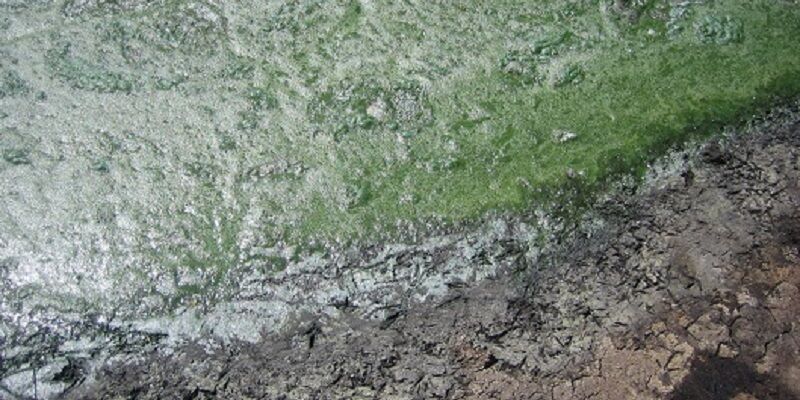
New research based on Precambrian rocks provides insight into how life evolved alongside changes in the chemistry of Earth’s surface.
The study, published today in Nature, examined geochemical records of Earth’s "Great Oxidation Event" 2.3 billion years ago, and captured for the first time the response of the nitrogen cycle to this major transition in the planet’s surface environment.
Researchers from the University of Leeds played a key role in the study, which fills a ~400 million year gap in geochemical records across a dramatic change that occurred halfway through Earth’s history, when oxygen first accumulated in the atmosphere.
Study co-author Dr Robert Newton, from the School of Earth and Environment at Leeds, said: “The rise of atmospheric oxygen is thought to be an essential ingredient for the development of multicellular life on Earth, and ultimately our own evolution. The nitrogen isotope analyses we performed at Leeds as part of this project are one of the few ways we can study the operation of the nitrogen cycle in the past.”
Nitrogen is an essential element in all living organisms, required for the formation of proteins, amino acids, DNA and RNA. As a key "nutrient", nitrogen therefore exerts a control on global primary productivity, which in turn regulates climate, weathering, and the amount of oxygen at Earth’s surface.
Despite the importance of nitrogen to life, major gaps existed in the previous geochemical records of how the nitrogen cycle responded to critical events in Earth’s history.
The result of the research is a set of high-resolution records of nitrogen isotopes in sedimentary rocks that record the environmental conditions during the Great Oxidation Event. These detailed records document the immediate onset of a modern-style nitrate-driven ecosystem, appearing simultaneously with the first evidence for oxygen in the atmosphere.
Study co-author Professor Simon Poulton, also from the School of Earth and Environment, said: “The rocks we studied came from the National Core Library in Donkerhoek, South Africa. They are unique, in that they record the precise moment the Earth’s atmosphere became oxygenated.
"Because the rocks were formed in a marine environment we were able to use advanced geochemical techniques to show the rapid response of the shallow ocean to atmospheric oxygenation. This was a monumental transition in the history of the Earth.”
Study lead author Dr Aubrey Zerkle, from the School of Earth and Environmental Sciences at the University of St Andrews, said: “The ‘Great Oxidation Event’ was arguably the most dramatic environmental change in Earth history.”
Dr Zerkle explained that catastrophic upheavals in past surface conditions such as these provided a critical window for scientists to study how the biosphere responds to environmental change.
She said that understanding how life on this planet responded to geochemical changes in the past will help us to more clearly predict the response to future changes, including Earth’s warming climate. It will also inform our search for habitable planets in other solar systems.
Dr Zerkle added: “Our data shows the first occurrence of widespread nitrate, which could have stimulated the rapid diversification of complex organisms, hot on the heels of global oxygenation. The building blocks were apparently in place, the question that remains is why eukaryotic evolution was seemingly stalled for another billion or more years.”
This study was funded by the Natural Environment Research Council and included researchers from the University of St Andrews, the University of Leeds, the University of California, Riverside, and Syracuse University.
Further information
For interviews, please contact Anna Martinez, University of Leeds Media Relations Officer, on +44 (0)113 343 4196 or email a.martinez@leeds.ac.uk
Image shows algae making bubbles of O2 in a South African lake. Credit: Aubrey Zerkle, University of St Andrews.